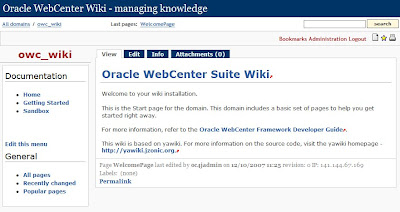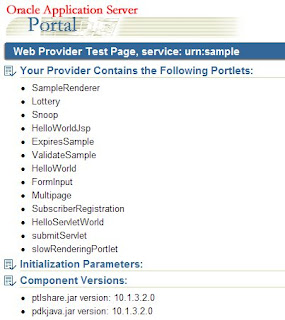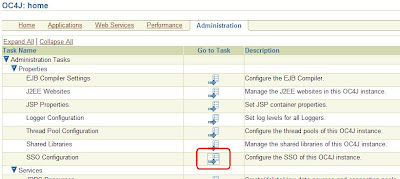I had the privilege of listening to Kevin Walsh's "30/30" presentation last week. Kevin is Oracle's CTO for Asia Pacific and has a long and illustrious career which makes him uniquely qualified to deliver this talk - the theme of which is to look 30 years back in IT history to get a perspective on how far we have come, and then attempt to look 30 years into the future (with all due disclaimers). Take a 30 year view, and things get distinctly freaky - nanotech, quantum computing and so on.
It's actually the second time I've heard the presentation, but this time I happened to have just finished Tim Flannery's
The Weather Makers (my review is
here).
Now, Kevin's theme was technology so I can't fault his focus, but I got to thinking that within the 30-year timeframe one of the biggest challenges facing the world is climate change, and this must surely have an impact on what we know today as "business software".
Now, before you say "pish!" and dismiss this as an eco-nut rant, consider three facts of importance:
- that climate change is upon us - we have reached the tipping point [by 2005 we had refereed proof of global warming]
- that the change is for the worse - the only disagreement being about the specific effects our planet will need to endure
- that while human activity is not the only contributor, we know that it is a factor, and more importantly we know ways in which our impact can be lessened (Bex Huff just had a great post about the greenest cars; you may be surprised)
So the question is really no longer
should we act but
will we?
Green-thinking Enterprise Software
Of course in 2007, the prevailing mentality is that enterprise software hasn't got alot to do with the environment. It's the power companies, OPEC and so on that matter, right? Take a look at the OpenWorld session agenda, and it's hard to avoid the conclusion that the environment is ... well, off the agenda. On the
Oracle corporate website you will find an environmental statement much along the lines of any "non-energy related" company. We turn our lights off at night etc etc.
I couldn't find an environmental statement on the
SAP site, which is strange since I thought the Europeans were renowned for their green intelligence.
SAP Environmental Compliance is covered under GRC, but looking further at the SAP
Mining or
Oil&Gas industry marketing sites and the promise is simply to help you
lower costs, increase profitability, and improve competitiveness.
I reckon this is something that needs to change. Fundamental to the health of the planet (and future of the human race) is the efficiency and carbon load firstly of the power grid, and secondly transportation. While governments and consumers have a significant role, on the whole it is business that is either the direct power user, or are the mediator of our demand.
And what do businesses around the world rely on to operate efficiently and profitably? Why, that wonderful class of enterprisey software of course - which for the majority of companies means
SAP or Oracle, the behemoths of the industry.Enterprise software has three extremely important potentials when it comes to the envirnmental agenda:
- It provides unprecendented access to manage and report on end-to-end operations - supply chain, manaufacturing, distribution, retail and so on
- It facilitates the reduction of data to financal metrics
- Good enterprise software done well has the ability to promulgate best practice across industry and across the globe.
In other words, why shouldn't the CEO's dashboard be displaying the company's envirnomental performance alongside traditional measures, and most importantly (if you want to see behavioural changes), show the cost impact to the company as a result?
Completed your energy audit and started to implement recommendations? Great - just watch the benefits start flowing to the bottom line.Or to put it another way -
enterprise software has a critical role to play in ensuring that our ability to execute on the environmental agenda can keep up with our save-the-planet rhetoric.The Tao of SOX and what it has to do with the Environment
Unfortunately SOX won't keep your feet dry as water levels rise, nor may you need them to keep warm.
But it is instructive how SOX has swept the world of enterprise software, and arguably stems from just a couple of cases of massive corporate fraud in the US and one in Europe. Within a few years, the legislative impact has spread around the globe, and all enterprise software companies worth their salt have a SOX or Basell II position.
It has spawned a new "industry" called
Governance, Risk and Compliance (or variations thereof). While this can and does incorporate safety, health and environmental aspects of corporate governance, the SOX pendulum is still swinging and the focus remains squarely fixed on financial aspects only. Checkout the
Oracle GRC materials and you'll find (with some effort) a scant 1 or 2 indefinite references to the environment. SAP's
Environmental Compliance material does seem to read better.
RedMonk's James Governor has been giving some good coverage of GRC offerings, including the environmental aspect.Just like SOX has had a major impact on our
economic environment in such a short time, I think we need a similar revolution concerning our
actual environment.
I hate to say it, but in the US it may just be a matter of a few more years of class 4-5 hurricanes to trigger a change.
A government facing continued multi-billion relief budgets and a population clamouring for "something to be done", is a government ready to act.So we're not just talking about a salve for the conscience. The insurance industry will be heard also, and I'm sure that carries quite a bit of weight on Capitol Hill. From the Wall Street journal 7 May 2003:
With all the talk of potential shareholder lawsuits against industrial emitters of greenhouse gases, the second largest re-insurance firm, Swiss Re, has announced that it is considering denying coverage, starting with directors' and officers' liability policies, to companies it decides aren't doing enough to reduce their output of greenhouse gases.
Why China could be the turning point
Across the globe, there is nothing conceptual about the environmental challenges facing China, and so much stems from the thirst for power to drive its growth.
As usual, any stats about China are boggling: 120-odd new coal-fired power stations in the current decade, and more to come each year (despite the fact that they also project to commission 2 nuclear power stations a year for the next few decades).
With typical PRC pragmatism, there are signs that China knows it needs to act and has already
adopted the goals of reducing its national energy intensity by 4 percent each year and obtaining 15 percent of the country's energy from renewable sources by 2020. Expect ever-tougher environmental laws being
executed in China.
So while the China market for Enterprise Software booms, I think it is also fair to expect that within a few years software that just offers to implement efficient and profitable business processes will not cut it. The products that sell will be those that also help companies to meet their environmental obligations.
This trend could produce some interesting outcomes. The expectation will of course be that the western products (notably Oracle and SAP)
must surely incorporate all the environmental best practice. If this is found not to be the case (hmmm?), it would open an opportunity for one of the Chinese ERP vendors to develop and sell a product properly configured for the local market. After which, we find the vendor turn around and sell their environmentally-best-practice enterprise software back into the US and European markets, a la Lenovo?
Why the Enterprise Software vendors need to wake up
Well, to stay in business and make alot of money seems a pretty good reason.
We could be talking as little as 5 years for the worm to turn - a few more hurricanes hitting the US, and China rapidly awakening to the fact that it's ecomonic success is so heavily dependent upon the environment.
At that point, you will not be
the most important enterprise software company if you do not have adequate environmental, health and safety capabilities baked into your offering. You will not be welcome, useful or relevant.
So where is the Oracle/SAP Environmental Management System, Carbon Ledger or the Energy Audit and Reporting System? The problem is that most of the enterprise software has not been designed with an environmental agenda in mind.
So what's an enterprisey company to do?
- Launch your environmental mission statement at your OpenWorld/Sapphire/etc. The mission? To be the most important enterprise software partner helping business meet their environmental commitments across the globe.
- Short-term, beef up the environmental focus of your Governance, Risk & Compliance-type offering. It should be the easiest quick-fix.
- Commit say 20% of R&D to baking environmental capabilities into core business services (application components)
Bonus marks may be awarded if you want to point out that for all it's good work, the Gates Foundation will be pretty irrelevant should humanity face the worst outcomes predicted by those modelling climate change. So Larry could help fix the planet, give Bill a bloody nose ... and make money doing it;-) Perfect!
Through the looking glass
If my rant hasn't been kookie enough already, I'll go out on a limb and humbly make some 30-year predictions ....
- The world survived to 2037. So far. But the jury is still out as to whether we have acted just-in-time or just-too-late.
- By 2037, value investors on the stock markets pay as much note of CPS (carbon-per-share) as EPS (earnings-per-share).
- Some years earlier, Oracle donated an installation of Database 20q (quantum edition) to globally consolidate carbon emission, energy distribution and planetary metrics, and drive the climate change models used for the daily briefings to the leaders of all UN member states.
- Oracle released Fusion Applications 20e (environmental edition), which as the marketing material states is "used by 9 out of 10 Global Fortune 1000 companies to meet or exceed the environment-neutral operating standards as required by law while maximising benefits for their shareholders, employees and community".





















